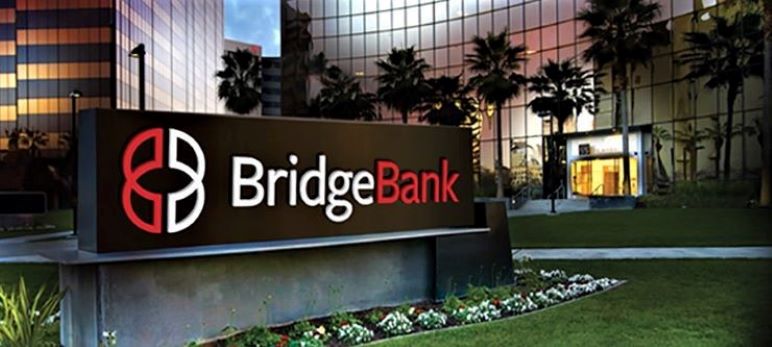While government and banking leaders and investors may still be mulling possible causes of last week’s financial collapse of key technology lenders, Moody’s Investor Service didn’t waste any time identifying “the root cause of these banks’ distress” as high interest rates.
Moody’s said the Federal Reserve must share the blame with bank executives for the most recent financial crisis.
Despite assurances from President Joe Biden Sunday that the U.S. banking system is “safe,” some banks still face serious challenges, according to a March 13 report by Moody’s.
In a new report released Monday, Moody’s identified some U.S. regional banks “that are particularly vulnerable to the current (post Silicon Valley Bank failure) deteriorating operating environment.”
Moody’s, whose credit ratings can have a profound effect on the profits of financial services companies, did praise the quick action taken last weekend by the Federal Reserve and the U.S. Treasury “in providing systemic stability.”
“We believe some U.S. banks remain exposed to increased asset/liability…risk, reduced profitability and elevated credit risk in this period of continued monetary tightening, and accordingly we are reviewing the ratings of a select group of banks.”
The investor credit rating service downgraded the credit rating of six banks, including the holding company of San Jose-based Bridge Bank.
Bridge Bank’s Western Alliance Bancorporation was downgraded by Moody’s from a Baa2 rating to a baa1 rating, which increases the bank’s borrowing costs.
The Western Alliance (WAL) stock price fell another 23% today, to 29.88. Twenty minutes before the closing NASDAQ bell, the WAL stock had fallen to $22.50 per share.
Moody’s predicted that some banks will continue to face lower profits and higher risks of failure as long as high interest rates persist, “though some stronger institutions may benefit from a flight to quality.”
“Significantly higher interest rates will continue to weigh on some U.S. banks’ profitability,” the March 13 report warned.
Higher interest rates are good news to many banks, because it means that
they can charge higher interest rates for loans – but the higher rates also mean that banks’ own borrowing costs increase, and that long-term securities bought at lower interest rates can only be sold at significant losses.
The investor credit rating service warned that last week’s two bank closings and one self-liquidation show that banks that don’t manage ratios of loans to deposits, rely heavily on business from venture capital and private equity firms, or hold large deposits of crypto currencies run higher risks of failure.
The government’s decisive action March12 to protect uninsured investors, which left stockholders and bondholders to absorb the losses at two failed banks, won’t ease what Moody’s said is the continuing difficulty of some banks to raise enough cash to better balance their deposit-loan ratios.
In its report, Moody’s described the Silicon Valley Bank as resulting from “the bank’s attempt to address a very significant asset liability management mismatch resulted in a deposit run and, in turn, the bank’s failure.”
Moody’s warned that other U.S. banks are relying too heavily on what it called “non-bank finance that grew quickly during easy monetary policy” – low interest rates.
The investor service noted that Silvergate Capital Corp. in San Diego, which decided to close its doors last week, “had a sizable outflow of uninsured crypto-related deposits and suffered losses on long-dated securities it was forced to liquidate to meet those outflows.”
“While these three banks (Silicon Valley Bank, Signature Bank and Silvergate) were unique in their focus on crypto and venture capital/private equity… it is increasingly evident that other U.S. banks are also facing …strains” because of weak governance and oversight” of risky management of their assets (loans) and liabilities (deposits).
Moody’s blamed “the very steep increase in the fed funds rate and withdrawal of unconventional monetary policy” for combining to reduce bank deposits and weaken bank liquidity.
Other bank stocks that Moody’s downgraded on Monday were: First Republic Bank of San Francisco, Baa1 to a3; INTRUST Financial Corp. of Wichita, Kan., Baa2 to baa1; Comerica Inc. of Dallas, A3 to a2; UMB Financial Corp. of Kansas City, A3 to a2; and Zions Bancorporation, Salt Lake City, Baa1 to a3.
Moody's Investors Service provides investors with credit ratings, risk analysis, and research for stocks, bonds, and government entities.


wrong lessons all around
limit account depositor’s payout to 250K, as that is what they are insured for, and let the rest take their losses
life in the big city boys, risk management isn’t forcing the middle class to underwrite the downside of your foolish risks
Just an Observation,
Call all loans, mortgages, cmbs and rmbs, and use them to pay out deposits.
There is no protection regarding them, since if a bank dies, those just become debt to the original borrower or purchaser. Let them get new ones at current values and interest rates